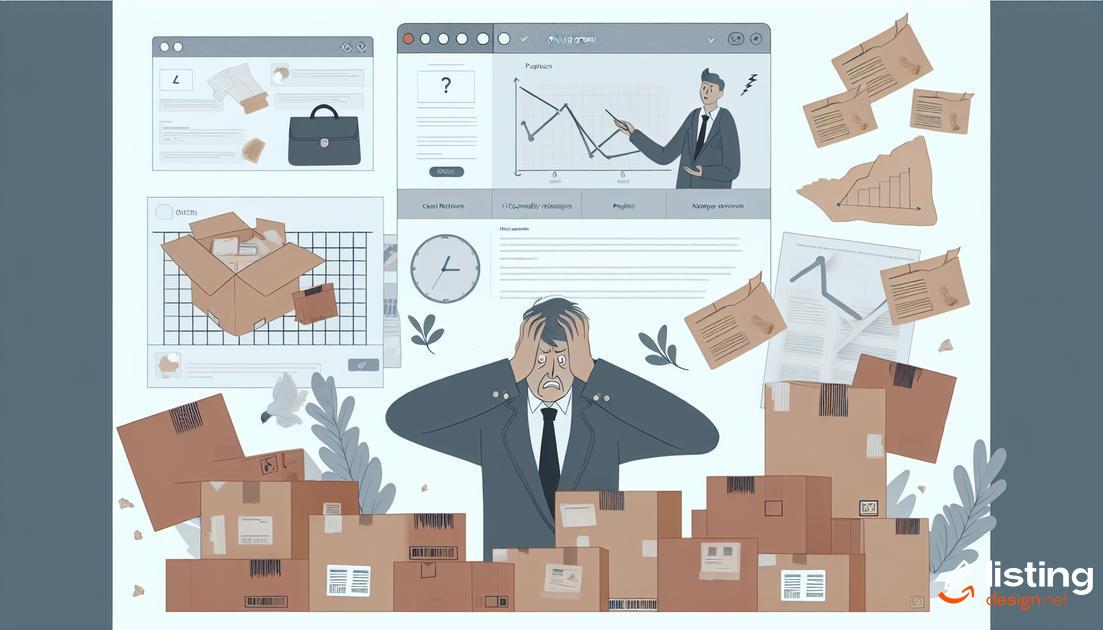Selling on Amazon worth it? If you’re considering becoming an Amazon seller, you’re probably wondering whether the effort will pay off. We’ll explore the pros and cons, fees, and strategies to help you succeed. By the end of this guide, you’ll have a clearer picture of whether selling on Amazon is the right choice for your business.
Table of Contents
Pros of Selling on Amazon
Wide Customer Base: With millions of active customers, Amazon offers a ready market for your products. This vast reach allows you to cater to a global audience, significantly increasing your potential sales.
Trust and Credibility:
Amazon’s reputation as a reliable and trustworthy marketplace can enhance the credibility of your business. Shoppers are more likely to purchase from a platform they recognize and trust.
Convenient Fulfillment Options: Amazon’s Fulfillment by Amazon (FBA) service takes care of storage, packing, and shipping of your products. This not only saves time but also ensures efficient handling, leading to better customer satisfaction.
SEO and Visibility:
Leveraging Amazon’s search engine can help your products gain higher visibility. Effective keyword optimization can lead to better rankings, making it easier for customers to find your listings.
Marketing and Advertising Tools: Amazon offers a variety of advertising solutions to boost your product visibility. Sponsored Products and Sponsored Brands can drive traffic to your listings, while deals, coupons, and promotions can attract more buyers.
Analytics and Reporting:
Access to detailed analytics and sales reports helps you track performance and make informed decisions. Understanding customer behavior and sales trends can guide your marketing strategies and inventory management.
Cross-Promotions: Amazon allows you to cross-promote your products, increasing the chance of multiple sales from a single customer visit. This feature helps in maximizing the return on each visitor to your store.
Cons of Selling on Amazon

One significant disadvantage of selling on Amazon is the intense competition. With millions of sellers on the platform, it can be challenging to make your products stand out. This level of competition often results in price wars, which can lower your profit margins.
Another con is the high fees associated with selling on Amazon. The platform charges for various services, including referral fees, fulfillment fees, and storage fees if you use Amazon FBA. These costs can add up, particularly for new sellers who are still establishing their businesses.
Additionally, Amazon’s strict policies and guidelines can be a double-edged sword. While they help maintain a level of quality across the platform, they also mean that sellers must be highly diligent to avoid suspension or penalties. For instance, Amazon’s return policies can sometimes favor customers over sellers, leading to potential losses.
Moreover, there’s the issue of lack of control over your brand. When you sell on Amazon, your products are listed under Amazon’s branding rather than your own. This can reduce brand loyalty and make it harder to build a recognizable brand identity.
Lastly, Amazon can also introduce its own competing products. Known as ‘private label’ products, these can take away potential sales from your listings, especially since Amazon has the advantage of preferred placement in search results.
Setting Up Your Amazon Seller Account
Understanding Amazon Fees

Different Types of Amazon Fees
When you sell on Amazon, you'll encounter several types of fees. These can range from referral fees to closing fees. Understanding these fees is crucial for managing your profit margins effectively.
Referral Fees:
Amazon charges a referral fee on each item sold. The fee percentage can vary based on the product category, typically ranging from 6% to 45% of the item’s selling price. For most categories, the referral fee is around 15%.
Closing Fees:
In addition to referral fees, there are also closing fees. These are standard fees placed on specific items like media products (books, DVDs, etc.).
FBA Fees:
For sellers utilizing Fulfillment by Amazon (FBA), there are additional fees to consider. These include fulfillment fees, storage fees, and any optional services you might use. FBA fees are based on the size and weight of your products, with separate rates for standard-size and oversized items.
Monthly Subscription Fees
If you choose a Professional selling account, you'll need to pay a monthly subscription fee of $39.99. This fee provides access to advanced selling tools and the ability to sell in multiple categories without per-item charges. Individual sellers do not pay this fee but pay $0.99 per item sold instead.
Other Potential Fees:
There are other potential fees that sellers might incur, such as high-volume listing fees, refund administration fees, and fees for optional programs like Amazon Vine and Amazon A+ Content. An in-depth understanding of these fees can help you optimize your cost structure.
Strategies to Boost Your Amazon Sales
Optimize Your Listings: Ensure your product listings are detailed, accurate, and include high-quality images. Leverage specific keywords in your titles and descriptions to improve search visibility.
Competitive Pricing: Regularly monitor your competitors’ prices and adjust your pricing strategy to remain competitive. Use Amazon’s automated pricing tools for dynamic price adjustments.
Leverage Amazon Advertising: Utilize Amazon’s PPC (Pay-Per-Click) advertising program to drive traffic to your listings. Strategically bid on keywords related to your products to increase visibility.
Encourage Customer Reviews: Positive reviews can significantly impact your sales. Follow up with customers and encourage them to leave feedback. Offer excellent customer service to ensure positive experiences.
Utilize Fulfillment by Amazon (FBA): FBA can help provide faster shipping and better customer service. Amazon handles storage, packaging, and shipping, allowing you to focus on scaling your business.
Amazon Prime Eligibility: Ensure your products are Prime-eligible to attract Prime members who often prefer faster shipping options.
Promotions and Deals: Offer discounts, coupons, and deals to entice customers. Utilizing tools like Lightning Deals can help boost sales and improve product rankings.
Optimize for Mobile: A significant portion of Amazon’s traffic comes from mobile devices. Ensure your listings are mobile-friendly to capture this audience.
Track and Analyze Performance: Use Amazon’s analytics tools to track the performance of your listings. Regularly analyze the data and adjust your strategies based on what’s working and what’s not.
Handling Customer Service on Amazon

When handling customer service on Amazon, it’s essential to provide timely and effective responses to any inquiries or issues. Amazon’s platform offers tools to assist sellers in managing customer interactions.
First, ensure to periodically check and respond to customer messages. Quick responses can significantly improve your seller rating and reduce the chances of negative feedback. Utilize canned responses for common questions but personalize them to fit individual queries when necessary.
Resolving disputes efficiently is crucial. If a customer files a claim, review the order details, gather any supporting documents, and use Amazon’s Resolution Center to provide solutions promptly. This proactive approach can mitigate potential damages to your seller reputation.
Another essential aspect is managing reviews. Encourage satisfied customers to leave positive reviews, and professionally address any negative feedback by acknowledging the issue and offering to correct it. This shows potential customers that you value their experience and are committed to quality service.
Ensure your product descriptions are detailed and accurate to avoid misunderstandings. This not only helps in reducing the number of queries but also prevents returns and complaints. Ensure your listings include clear images and all necessary specifications.
Lastly, keep track of your customer service metrics available in Amazon Seller Central. Monitor your Order Defect Rate (ODR), return rates, and other relevant data to identify areas for improvement. By maintaining a high standard of customer service, you can enhance your overall selling experience on Amazon.
Managing Inventory on Amazon
Effective inventory management is crucial for maintaining the balance between supply and demand while maximizing sales. One of the first steps involves setting up inventory tracking systems. On Amazon, you have access to tools like the Amazon Seller Central dashboard, which allows real-time monitoring of stock levels.
Implement replenishment strategies to avoid stockouts and overstocking. Utilize the Amazon Restock Inventory tool to predict optimal restock quantities based on sales data and forecasted demand.
Consider using the Fulfilled by Amazon (FBA) service to handle storage and fulfillment efficiently. This service enables you to leverage Amazon’s logistics network, ensuring faster delivery times and better customer satisfaction.
Maintaining accurate product listings is integral to inventory management. Regularly update your product descriptions and images to reflect current stock status. Utilize Amazon’s Inventory File Upload tool for bulk updates.
Implement tracking mechanisms for inventory performance metrics, such as sell-through rate, inventory turnover, and days of supply. These metrics provide insights into the efficiency of your inventory management strategies and highlight areas for improvement.
Establish clear processes for handling returns and refunds. Efficiently managing returns minimizes losses and enhances customer trust. Use Amazon’s Returns Reports to analyze reasons for returns and identify trends.
Integrate your inventory management system with other sales channels if applicable. This synchronization helps maintain consistency across platforms and prevents overselling.
Finally, regularly conduct inventory audits to ensure accuracy. Physical counts and data verification can prevent discrepancies that disrupt your operations. Utilize Amazon’s Inventory Reports for precise auditing and compliance checks.
Exploring Amazon FBA

Amazon FBA (Fulfillment by Amazon) is a service that allows sellers to store their products in Amazon’s warehouses. Amazon takes care of the storage, packaging, and shipping.
One significant advantage of using Amazon FBA is the Prime eligibility. Products fulfilled by FBA are automatically eligible for Amazon Prime, which can lead to increased visibility and higher sales.
FBA also offers multichannel fulfillment, meaning Amazon can handle orders from other sales channels besides Amazon, such as eBay or your own website.
Additionally, Amazon FBA provides customer service and returns handling, allowing sellers to focus more on other aspects of their business while Amazon manages customer queries and returns.
However, it’s important to consider the costs involved with FBA. There are storage fees, including long-term storage fees for items stored in Amazon’s fulfillment centers for more than 365 days. Sellers also need to pay fulfillment fees based on the product’s size and weight.
Inventory management is another key factor. With FBA, Amazon requires that inventory is sent to their fulfillment centers in a specific way, which might require additional time and resources on the seller’s part.
It’s crucial to optimize the supply chain and manage inventory levels efficiently to avoid excess fees and ensure that products remain in stock to meet demand.
Marketing Your Amazon Store
Marketing plays a pivotal role in the success of your Amazon store. To stand out among the multitude of sellers, leveraging effective marketing strategies is essential.
Utilize Amazon Advertising
Amazon offers several advertising solutions such as Sponsored Products, Sponsored Brands, and Sponsored Display ads. Using these can help drive more traffic to your listings.
- Sponsored Products: These ads promote individual products and appear in search results and product detail pages.
- Sponsored Brands: These ads feature your brand logo, a custom headline, and multiple products. They appear in search results and can help increase brand awareness.
- Sponsored Display: These are display ads that target relevant audiences both on and off Amazon.
Optimize Your Product Listings
Ensure your product titles are clear and include relevant keywords. High-quality images, informative bullet points, and comprehensive product descriptions also enhance the appeal of your listings to customers. Utilize A+ Content to add rich storytelling content to your listings, improving both the aesthetic and the conversion rate.
Leverage Social Media
Promote your products on social media channels such as Facebook, Instagram, Pinterest, and Twitter. This not only broadens your reach but also drives additional traffic to your Amazon store.
Engage with Influencers
Partnering with influencers who have a loyal following can significantly boost your product visibility. Choose influencers who align with your brand values and have an engaged audience that fits your target demographic.
Implementing these strategies can help you gain a competitive edge and maximize your sales potential on Amazon.
Common Mistakes Amazon Sellers Make

Many sellers dive into the Amazon marketplace with high expectations but often fall short due to some common pitfalls. It’s crucial to avoid these mistakes to maximize your success.
- Ignoring Amazon’s Rules: Amazon has strict guidelines. Violating them can lead to account suspension or even a permanent ban.
- Poor Product Listings: Not optimizing your product titles, descriptions, and images can result in low visibility and poor sales.
- Inadequate Inventory Management: Running out of stock can harm your seller rating and affect your product ranking.
- Ignoring Customer Feedback: Negative reviews can severely impact your sales. Address complaints promptly and strive for high satisfaction.
- Overlooking Cost Analysis: Many sellers neglect to factor in Amazon fees, shipping costs, and other expenses, leading to a much lower profit margin than anticipated.
- Poor Pricing Strategy: Setting prices either too high or too low compared to your competitors can drive customers away. Conduct thorough market research to price your products competitively.
- Not Utilizing Amazon Ads: Failing to leverage Amazon’s advertising tools can result in lower visibility and missed sales opportunities.
By steering clear of these common mistakes, Amazon sellers can better position themselves for success in the competitive marketplace.
Alternatives to Selling on Amazon
Shopify
Shopify allows you to create a customized online store with easy-to-use tools for managing products, inventory, and payments. It provides extensive integration options with various apps to enhance your selling experience.
eBay
eBay is a well-established marketplace with a global reach. It supports auction-style and fixed-price listings, making it versatile for different types of sellers. This platform is especially beneficial for those selling unique or used items.
Etsy
Focused on handmade, vintage, and craft items, Etsy provides a niche market for creative entrepreneurs. With Etsy, you can benefit from a large audience specifically looking for unique, artisan products.
BigCommerce
BigCommerce offers robust tools for e-commerce and flexibility to scale your business. It supports multiple sales channels, including social media and POS solutions, making it a powerful choice for growing businesses.
Walmart Marketplace
Walmart’s marketplace is a great alternative for sellers looking to tap into a wide audience. The platform is selective about who it allows, ensuring a high-quality seller environment.
Target Plus is an invitation-only marketplace that allows approved sellers to showcase their products on Target’s website. It offers access to Target’s loyal customer base and high standards of service.
Final Verdict: Is Selling on Amazon Worth It?

After examining the numerous aspects of selling on Amazon, it becomes evident that the platform offers both significant opportunities and notable challenges. The decision to sell on Amazon should be influenced by your business goals, resources, and willingness to navigate a highly competitive marketplace.
One key advantage is the access to a vast customer base, which can drastically increase your product visibility. Additionally, the fulfillment services provided by Amazon, such as Amazon FBA, can streamline shipping and customer service operations, allowing you to focus on other crucial aspects of your business.
However, it’s essential to consider the fees associated with selling on the platform, which can impact your profit margins. While the exposure and infrastructure support are beneficial, the cost of maintaining a presence on Amazon can be a deterrent for some sellers.
Ultimately, understanding the dynamics of selling on Amazon and aligning them with your business needs is crucial. If the benefits outweigh the costs and challenges for your specific situation, Amazon can be a highly effective channel for growing your sales and reaching new customers.


